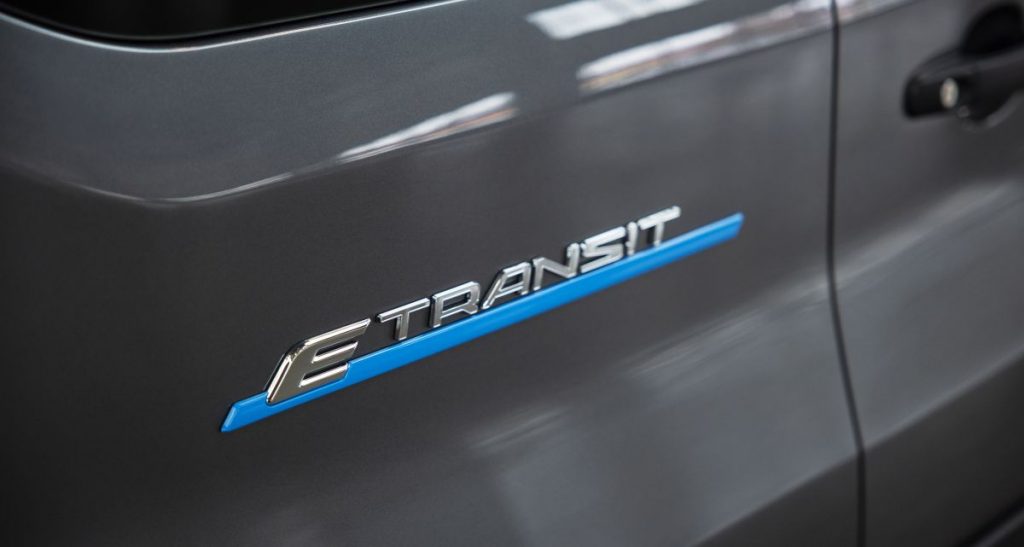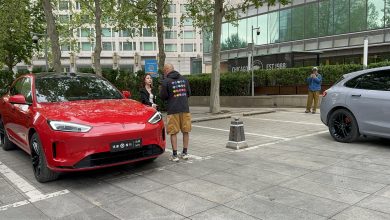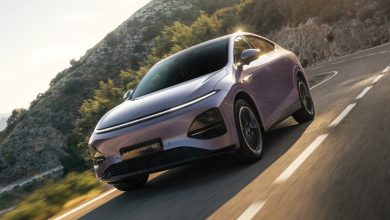Ford Introduces Fully-Electric E-Transit Van In North America
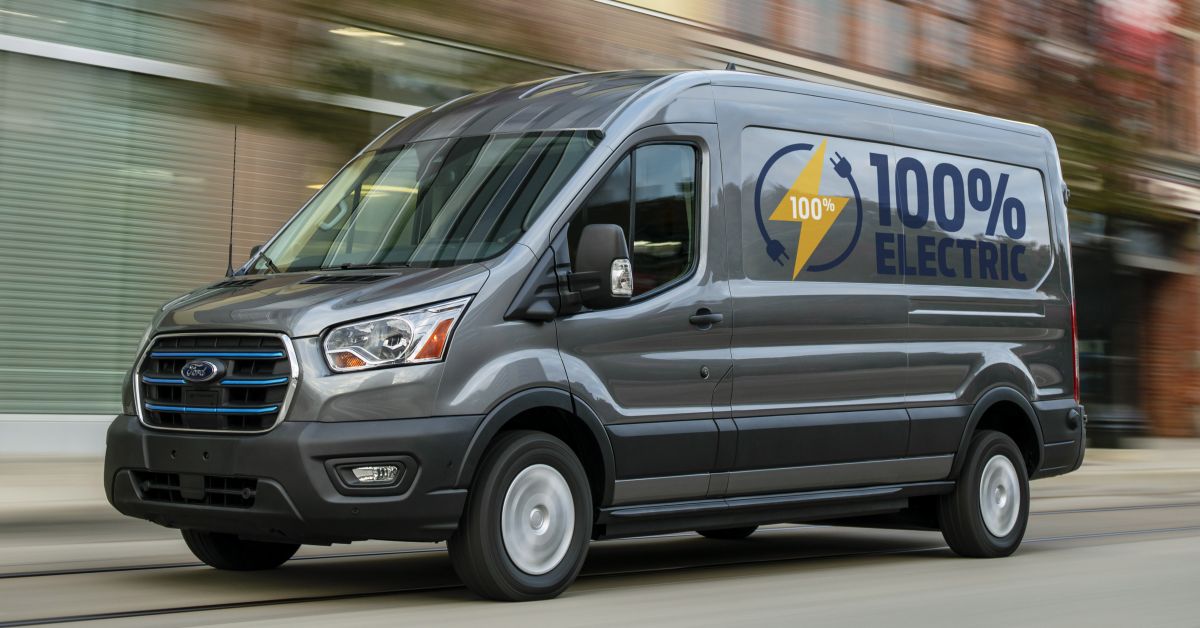
The Ford Transit is the latest commercial vehicle to go zero-emissions.
In this ever climate conscious world we live in today, the cars on the road today are slowly but surely heading towards electrification. That said, the commercial vehicles that account for most of the travel in this post-pandemic world is still largely reliant on the polluting oil-burners to transport goods across the length and breadth of the world.
There have been some efforts to shift towards electrification, but the move has been much slower than in the car market. Despite what Tesla and all the other electric lorry startups might want you to think, an electrified heavy goods vehicle is still a few years off, with only a handful on the road today, and most of them are still on an expanded trial basis.
Nevertheless, while larger commercial haulers may be a ways off zero-emission transportation, the smaller side of the industry is a different story. Especially with the most recent news from Ford with the introduction of its new E-Transit van. Yes, the most popular van in the world from the leading commercial vehicle brand in North America and Europe has finally added an electrified variant in its ranks.
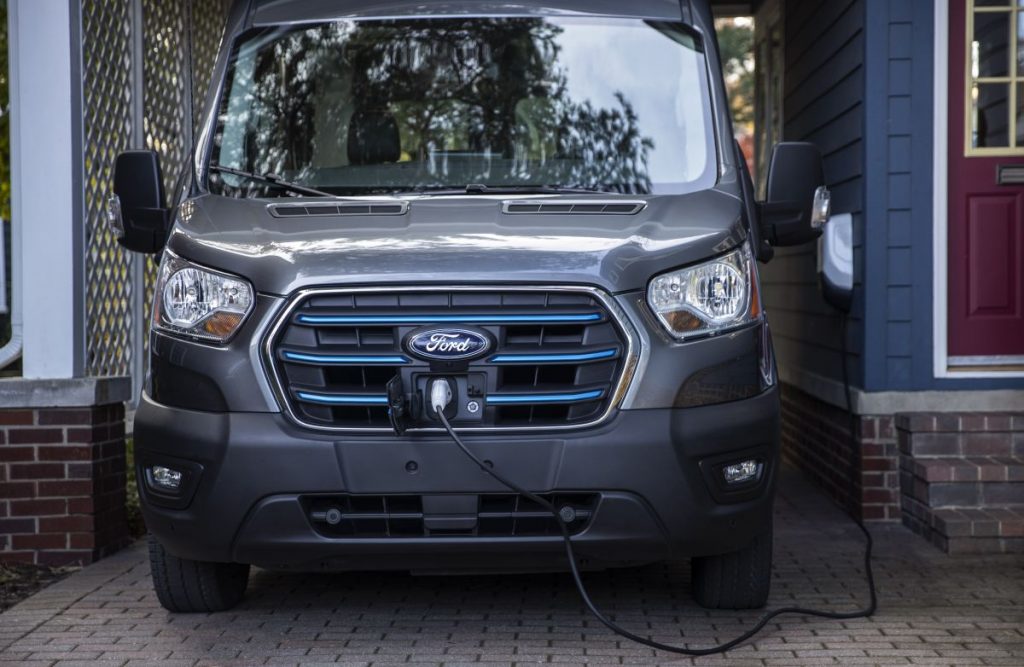
Before diving into the specs of this new zero-emissions Transit, the most important thing to note for any prospective E-Transit buyer is that this electrified van offers the ‘same interior cargo dimensions and standard mounting points’ as in its fuel burning counterparts. Therefore, any and all the upfitting and upgrading to suit the needs of one’s business that is normally done to a Transit will also be compatible with this battery-powered version.

The E-Transit will be available with the sole option of a single electric motor driving the rear wheels of this van. Outputting a reasonable 266 hp (198 kW) and 430 Nm of torque, Ford quotes a maximum payload of 3,800 lbs (1,700 kg) for this electrified van.
A 67 kWh battery pack located beneath the van’s body provides the juice for this single motor, allowing for an estimated range of 126 miles (202 km) on a single charge for the low-roof variant. Charging times meanwhile is said to be 10 to 15 miles (16 to 24 km) per hour depending on charging speeds.
All E-Transits are capable of AC and DC fast charging and come standard with a Ford Mobile Charger. Ford is also offering a corporate customers the option to purchase its Ford Connected Charge Station, which is claimed to fully charge E-Transit in eight hours.
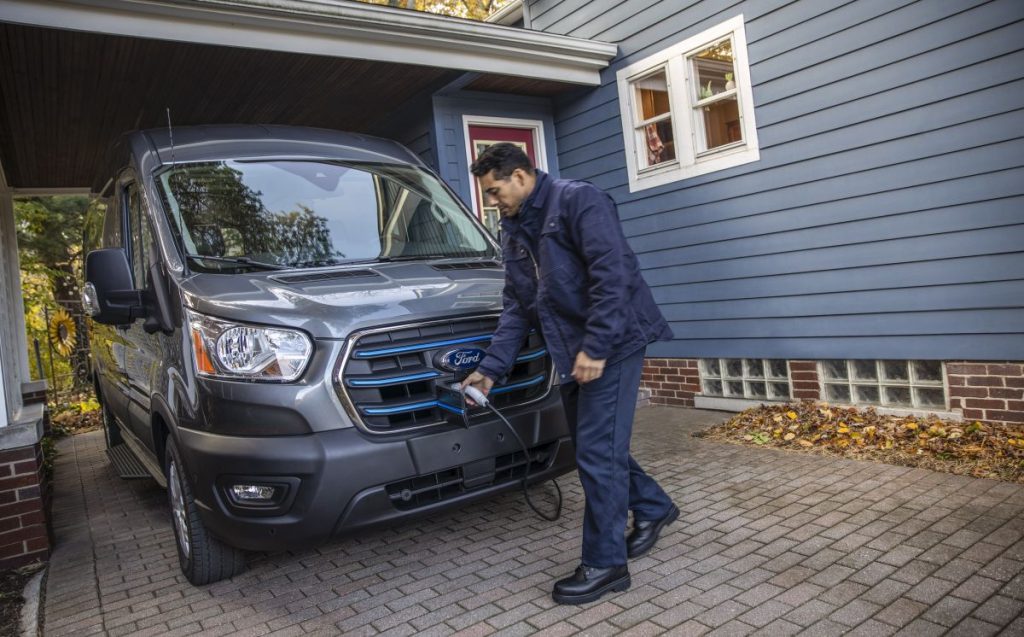
Continuing on the topic of battery power and charging, Ford is offering the E-Transit with an optional Pro Power Onboard feature, which essentially utilises the van’s battery pack as a mobile generator to provide up to 2.4 kW of power. More than enough to power tools or equipment on the job site from the van.
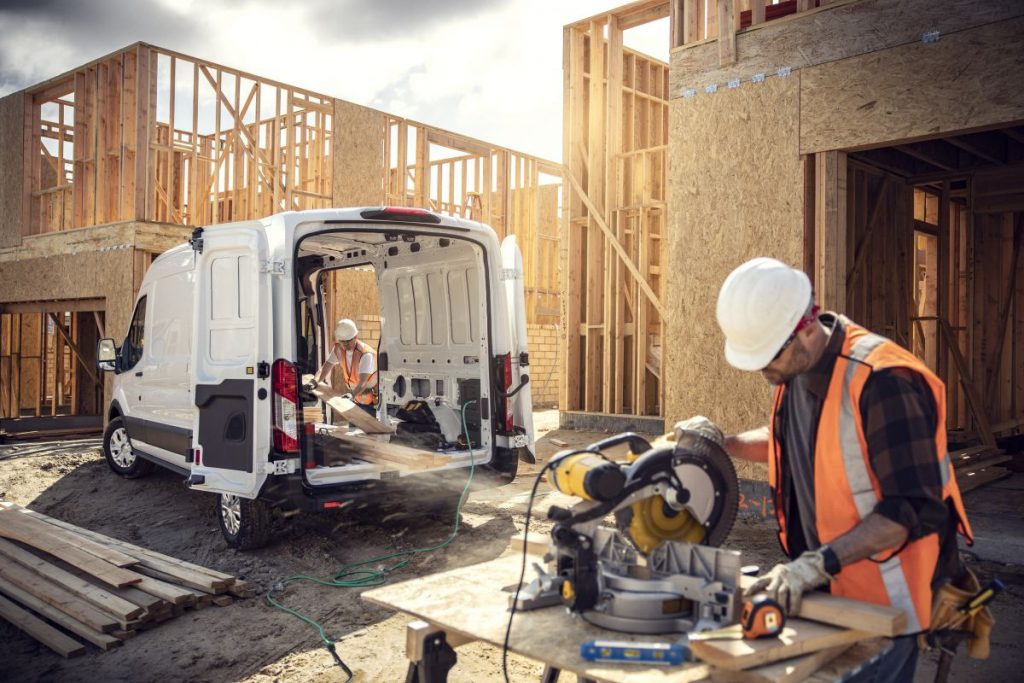
Aside from this nifty add-on, the E-Transit comes also with more conventional tech features that are commonplace these days on new vans. Much like its fuel-burning stablemate, Ford’s SYNC 4 infotainment system is standard on this zero emissions van. A whole host of active safety features are also available from the new Ford Co-Pilot360 active safety suite. These include Intelligent Adaptive Cruise Control with Speed Sign Recognition and Intelligent Speed Assist, Lane-Keeping System and Pre-Collision Assist with Automatic Emergency Braking, a Blind Spot Information System with Blind Spot Assist, a 360-degree camera and Reverse Brake Assist.
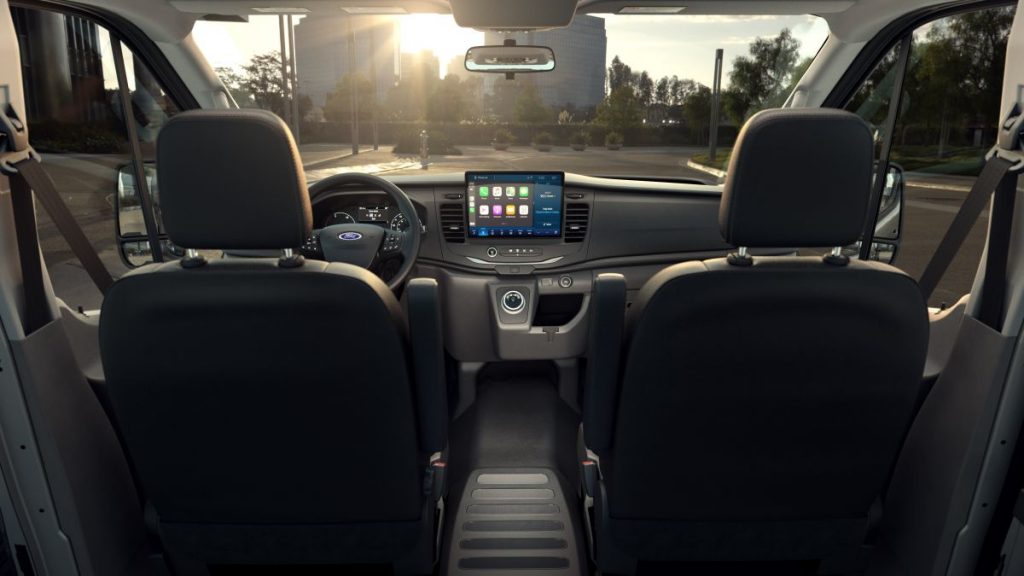
Prices for this new Ford E-Transit is set to start from $45,000 (RM 185,000) when it hits North American dealerships next year. Being a van of course, a choice of three roof heights and three body lengths are available on the E-Transit, not to mention cargo, cutaway and chassis cab variations. To the environmentalists however who are looking for something a bit more macho, perhaps the electrified Ford F-150 pickup truck that is set to arrive in mid-2022.

PRESS RELEASE: Ford, the world’s cargo van leader, introduces the 2022 E-Transit van, a smart workhorse that will offer customers enhanced productivity enabled by its fully electric powertrain, software solutions, services and Pro Power Onboard options.
“Ford is North America and Europe’s commercial truck and van leader, so the transition of fleet vehicles to zero emissions, especially for the fast-growing last-mile delivery segment, is critical to achieve our carbon neutrality goal by 2050,” said Jim Farley, Ford president and CEO. “Ford is ready to lead the charge, starting with the all-electric Transit and all-electric F-150 on the way. This is good for the planet and a huge advantage for customers to help lower their operating costs and provide connected fleet management technologies that will help their businesses.”
The all-new E-Transit is backed by Ford’s powerhouse network of 1,800-plus global commercial vehicle dealers, including 645 commercial vehicle centers across the U.S. – about 90 percent of which are electric vehicle-certified – for easy sales and service.
E-Transit offers the same interior cargo dimensions and standard mounting points for continued integration with hundreds of upfitters and vehicle modifiers worldwide who provide compatible racks, bins and accessories on gas-powered Transit. The majority of U.S. Transit vehicles sold last year were upfitted, and Ford continues to provide the same upfit financing support for van customers, including those who purchase or lease. With 13 upfitters located conveniently within 30 miles of the assembly plant, customers get fast delivery to the upfitter of their choice right when they order their van, removing the need for an upfit after delivery and helping them get on the road quickly.
While most newcomers in the van business are still building prototypes, developing testing protocols and addressing difficult usage conditions, Ford’s commercial vehicle ecosystem is expanding to include electric vehicle monitoring software and connected solutions for fleets to seamlessly integrate into day-to-day operations.
“We are doubling down on software and digital services to help our fleet customers grow and more efficiently run their businesses,” said Farley.
Ford – which is the leading commercial vehicle brand in North America and Europe – has been making Transit family vehicles for 55 years and commercial vehicles since 1905. The company will assemble E-Transit for North American customers at Kansas City Assembly Plant in Claycomo, Missouri.

Driving to go greener
Cities around the world – from London to Los Angeles – are pledging to create emissions-free zones to improve air quality, reduce greenhouse gas levels and improve noise pollution. California has also mandated that all new cars and passenger trucks sold in the state be zero-emission vehicles by 2035.
“More construction, emergency vehicles and utility services choose Ford commercial trucks and vans over any other manufacturer – and we’re committed to helping customers make the transition to zero-emission technology,” said Hau Thai-Tang, Ford chief product platform operations officer. “E-Transit is a data-rich, connected platform that will help our fleet customers unlock greater productivity. The value for our commercial customers grows over time as more connected vehicles join the network.”
E-Transit is part of a Ford investment in electrification of more than $11.5 billion through 2022. The all-new, all-electric Mustang Mach-E begins arriving later this year, while the all-electric F-150 starts hitting dealers in mid-2022. In North America, Ford is the first full-line automaker to announce plans to produce both an all-electric full-size pickup truck and a full-size van for customers – including fleet owners.
Ford intends to achieve carbon neutrality globally by 2050. It is the only full-line U.S. automaker committed to doing its part to reduce CO2 emissions in line with the Paris Climate Agreement and working with California for stronger vehicle greenhouse gas standards.
E-Transit will not only help companies operate with the benefits of electrification, it offers clear business advantages. Scheduled maintenance costs for the all-electric Transit are estimated to be 40 percent less than the average scheduled maintenance costs for a gas-powered 2020 Transit over eight years/100,000 miles. And with lower maintenance requirements and the opportunity to avoid fill-ups, companies can improve customer uptime and productivity.
Range, charging solutions tailored for business
E-Transit is a smart workhorse for U.S. cities designed with insight from 30 million miles of customer telematics data to deliver the right amount of range based on fleet needs – at a price that makes it easy to switch to electric. With a usable battery capacity of 67 kilowatt-hours, E-Transit will deliver an estimated range of 126 miles in the low-roof cargo van variant. The E-Transit has a starting MSRP under $45,000 for U.S. fleet customers – and comes backed with an eight-year, 100,000-mile electric vehicle component warranty.
“This makes E-Transit ideal for commercial customers who know their drive routes and often work in urban environments,” said Ted Cannis, Ford North America general manager of commercial business. “Affordability is key, and our customers buy only what they need to get the job done. E-Transit provides ample range at a price that makes the transition to electric easy. And Ford is just getting started.”
Ford will offer a variety of charging solutions to fit fleet and driver needs, whether at home, at a place of business or on the road. E-Transit comes with access to North America’s largest public charging network – providing drivers with seamless public payment capability and providing fleet managers with central account and billing management.
E-Transit features both AC and DC fast charging, coming standard with a Ford Mobile Charger that can plug into a normal 120-volt outlet for slow and steady charging or into a 240-volt outlet for faster charging. Those seeking the fastest home charging solution can purchase the Ford Connected Charge Station, which can fully charge E-Transit in eight hours.
On a 115-plus-kilowatt DC fast charger, E-Transit cargo van low-roof models can achieve approximately 30 miles of range in 10 minutes and approximately 45 miles of range in 15 minutes. When plugged into a 240-volt outlet, E-Transit cargo van low-roof models achieve approximately 10 miles per charging hour using the Ford Mobile Charger. Employing a Ford Connected Charge Station brings the number up to approximately 15 miles per charging hour.
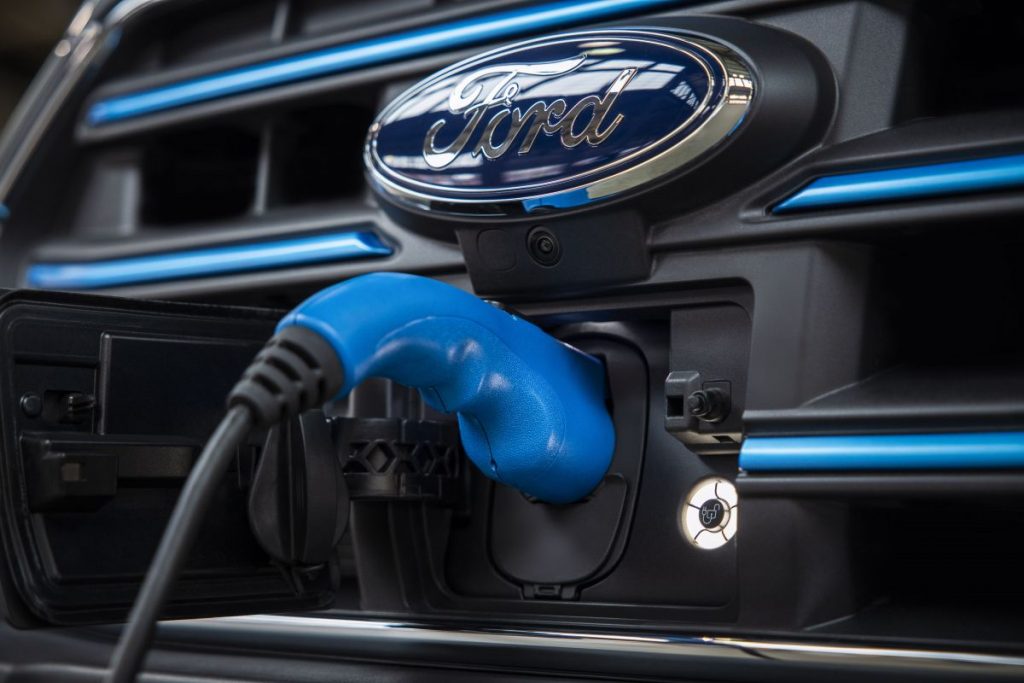
More power, connectivity on the go
E-Transit features optional Pro Power Onboard, which provides up to 2.4 kilowatts of power for North American customers to transform the vehicle into a mobile generator that powers tools and equipment on job sites and on the go. That’s enough capability to power everything from belt sanders to circular saws.
When activated, the standard 4G LTE modem unlocks available data subscriptions and delivers seamless connectivity to help commercial vehicle customers manage and optimize fleet efficiency. A range of dedicated electric vehicle services are available through Ford Commercial Solutions, including electric vehicle data enhancements from Ford Telematics and Ford Data Services.
Remote services like vehicle pre-conditioning – which optimizes cabin temperatures while E-Transit is plugged in to optimize battery efficiency – are also available, as well as charging reports that enable fleet managers to reimburse drivers who bring their vans home in the evening.
E-Transit also brings SYNC® 4 communications and entertainment technology to commercial vehicles, featuring a standard 12-inch touch screen that’s easy to use, plus enhanced voice recognition and cloud-enhanced navigation. With SYNC over-the-air updates, E-Transit software and SYNC features will stay at the forefront of performance.
On the road with navigation enabled, fleet operators can benefit from new Ford Co-Pilot360™ technology such as available Intelligent Adaptive Cruise Control with Speed Sign Recognition and Intelligent Speed Assist, which together identify speed limits and automatically change the vehicle speed accordingly.
E-Transit also features additional standard Ford Co-Pilot360 technologies designed to help fleet customers reduce driver-based insurance claims, including Lane-Keeping System and Pre-Collision Assist with Automatic Emergency Braking. Available features include Blind Spot Information System with Blind Spot Assist, a 360-degree camera and Reverse Brake Assist. These features can help maintain fleet driving standards and help improve driver confidence.
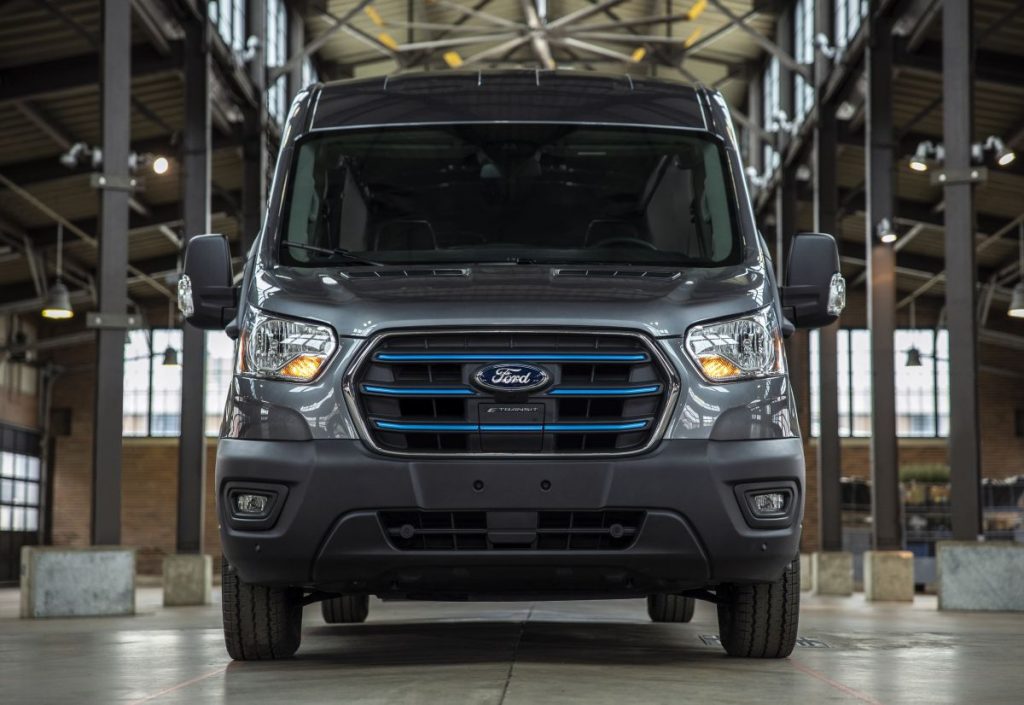
Delivered with the capability Transit customers love
Designed for uncompromised cargo capacity, the E-Transit battery is located underneath the vehicle body, providing up to 487.3 cubic feet of cargo space inside the high-roof, extended-wheelbase variant.
Ford engineers redesigned E-Transit’s rear-wheel drive and rear suspension to optimize cargo space, creating a heavy-duty semi-trailing arm suspension system enabling better steering precision and more confident handling, plus better traction both in laden and unladen conditions.
For E-Transit cargo vans in the U.S., Ford is targeting a maximum payload of 3,800 pounds, and up to 4,290 pounds for cutaway versions – with a powerful electric motor delivering a targeted 266 horsepower/198 kilowatts of power and 317 lb.-ft. of torque across all configurations. Fleet owners will have the capability they need to get the job done.
In the U.S., E-Transit is available with a choice of three roof heights and three body lengths, as well as in cargo, cutaway and chassis cab versions.
